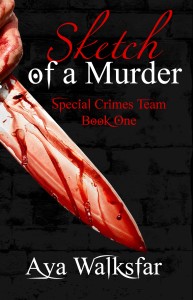Today, as part of the #MSH #Blog #Tour, I have the honor of #interviewing Lieutenant Michael Williams from the Special Crimes Team in Seattle, Washington. Thank you, Lieutenant Williams, for taking the time to come and talk with us.The subject of today’s #interview is: are you a plotter or a pantser?
Lieutenant Williams: I appreciate being invited.It would be helpful if you would define those terms again.
Actually the term pantser comes from NaNoWriMo, National Novel #Writer’s Month. It describes an #author who ‘flys by the seat of the pants’. The #author doesn’t have an outline, a summary, nothing except the basic idea for a #novel.Plotter is pretty self-explanatory.This type of #author plots the entire novel or a large portion of it,has an outline or a summary,often has biographies of the various characters, especially the main characters and protagonist.
My theory is that there are divisions within #detectives that correspond to the divisions of types of #authors. So tell me, are there #detectives who are plotters versus #detectives who are pantsers?
Lieutenant Williams: (a smile that reaches up and causes his eyes to sparkle with good humor) I am afraid I have to confirm your theory. Of course, we have certain non-negotiable procedures, protocols that must be followed as we solve #crimes. (He gets a devilish gleam in his eye) And, we do our best to adhere to those.
(Interviewer raises eyebrows in gentle disbelief) Not what I’ve heard about the #Special #Crimes #Team.
Lieutenant Williams: (clears throat) Hmm. Don’t believe everything you’ve heard about us, (big smile) even if most of it is true. However, we digress. As I was saying, there are plotters and pantsers within the ranks of #detectives. A good example of that is Sergeant Slowater–I believe you attempted an interview with her not too many weeks ago–and myself.
Sergeant Slowater would be considered a plotter. She believes absolutely in logic, in following leads in a methodical manner, in carefully constructing a case, step-by-step. She is very intent on weighing the possible outcomes against the risks, and having backup plans in place. She does not give much credence to what she terms “woo-woo stuff”. This includes non-traditional methods such as using the press, giving weight to anything that cannot be perceived by the five ordinary senses, that type of thing. Sergeant Slowater gets uncomfortable with, as my granny used to say ‘coloring outside the lines’.
I am more of a pantser. Once I have done all that I can within the ordinary methods of solving a case, I am inclined to follow my instincts, to perhaps follow unconventional leads, and give credence to information that comes from sources that don’t necessarily use the five ordinary senses. I guess you could say that I am a bit too comfortable ‘coloring outside the lines’. (He smiles.)
(He cocks his head and looks at me) May I ask you a question?
Of course. (Interviewer gives Lieutenant big smile and a firm nod) I had hoped this would be more a dialogue than simply a question and answer period.
Lieutenant Williams: How do you see your style of #writing?
(Interviewer frowns in concentration) Well, I believe I fit the pantser style, like you. I don’t use outlines, summaries, bullets, or any biographies of my characters. I simply am (smile) ‘attacked by an idea’ that won’t leave my mind until I write it down. (a shrug) After that, I just follow where it leads me.
Lieutenant Williams: Why do you use that style? Why not use the plotter style?
(Interviewer taps a finger against her lips as she thinks) I suppose it’s because my characters, like real people, like the criminals you go after, don’t always follow a script, a plot, an outline. They can sometimes dart off in unpredictable directions. I guess, for me, it’s important to study why they act, and react, as they do. What causes them to go in a certain direction, act in a certain manner, say what they do, believe as they do? People can’t be put on a graph like a mathematical equation. Does that make sense?
Lieutenant Williams: (a slow thoughtful nod) Yes, it does. That is exactly why I use the pantser style in solving crimes. It is more about understanding the perpetrator, looking at life from his perspective. If I can understand the perpetrator, then I can predict the next action to be taken.
You said you are open to using non-traditional methods. Are you talking about psychics? And what do you mean by ‘coloring outside the lines’?
Lieutenant Williams: (Purses his lips as he thinks) Let’s just say that I believe there are things outside of our normal senses that can be utilized in solving #crimes, or #writing books. As for ‘coloring outside the lines’, there are situations that force a #detective to make hard decisions. Sometimes those decisions don’t follow absolutely along the lines of procedure. That’s all I will say on that subject.
(Interviewer glances at her watch) Oh, my! We have run overtime! I am so sorry to have kept you beyond the time I requested.
Lieutenant Williams: (good-natured grin) In that case, I guess you’ll have to buy me a venti mocha with two-percent milk and no foam, but lots of whipped cream. Sergeant Slowater got me hooked on those fancy coffees.
You got it! There’s a Starbucks I like.
For my blog followers, if you would like to know more about Lieutenant Williams and the Special Crimes Team be sure to stay tuned for the announcement of the release of #Sketch #of #a #Murder, Book 1 of the Special Crimes Team series.
For more information about me and about my books:
Amazon: http://www.amazon.com/author/ayawalksfar
Smashwords: http://www.smashwords.com/books/view/314888
Smashwords: http://www.smashwords.com/profile/view/AWalksfar
#Facebook: http://www.facebook.com/ayawalksfar
#Twitter: http://www.twitter.com/Aya Walksfar @ayawalksfar
Blog: http://www.ayawalksfar.com
My publisher: #MSH http://www.mountainspringpublishing.com
Join me at my NEW! #Pinterest site and watch it GROW!: http://www.pinterest.com/ayawalksfar
Find me on #Goodreads: http://www.goodreads.com/ayawalksfar

